Villa Park
| Capacity | 42 530 |
|---|---|
| Country | England |
| City | Birmingham |
| Clubs | Aston Villa FC |
| Inauguration | 17.04.1897 (Aston Villa - Blackburn Rovers) |
| Renovations | 1911, 1914, 1922-1924, 1939-1940, 1954, 1958, 1962-1963, 1976-1977, 1992-1994, 2000-2001 |
| Record attendance | 76 588 (Aston Villa - Derby, 03.1946.) |
| Address | Trinity Rd, Birmingham B6 6HE |
Advertisement
Villa Park – stadium description
Where does Villa Park get its name from?
Villa Park owes its name to its location on the grounds of the former Aston Hall estate, a 17th-century residence in Birmingham surrounded by vast gardens and green areas. The word Villa
comes from Aston Villa Football Club, which moved to this site in 1897 from its previous ground at Wellington Road in Perry Barr.
The decision to name the stadium Villa Park was a natural combination of the club’s identity with the character of the area. Park
referred directly to the landscaped grounds and open nature of the site, while Villa
emphasized the link to Aston Villa, one of the oldest and most successful football clubs in England.
Interestingly, when it first opened, the venue was also known as the Aston Lower Grounds, as it occupied the lower section of the gardens belonging to Aston Hall. Over time, as the club grew in stature and established its new home here, the definitive name Villa Park took hold, becoming a symbol not only of the team but of Birmingham itself.
Where is Villa Park located?
Villa Park is located in Birmingham, the second largest city in England, in the northern part of the Aston district. The stadium stands on Trinity Road, right next to the main Aston Expressway (A38), which connects the city centre to the M6 motorway. This gives the venue excellent road access to both central Birmingham and the rest of the country.
The stadium’s immediate surroundings are the former grounds of Aston Hall, a 17th-century residence set within extensive gardens. It was in this area, known as the Aston Lower Grounds, that Aston Villa established their new home in 1897. The location therefore combines historical character with practical functionality.
What is the capacity of Villa Park?
The current capacity of Villa Park is around 42,640 all-seated places. All four stands are fully covered and equipped with seating, which has been the standard in the top tiers of English football since the early 1990s, following the Taylor Report that required the removal of standing terraces.
The stadium is made up of four main stands: the Holte End, the Trinity Road Stand, the Doug Ellis Stand, and the North Stand. The most iconic of these is the Holte End, which for years was one of the largest standing terraces in England. Today it holds several thousand home supporters and remains the focal point of Aston Villa’s matchday atmosphere. The Trinity Road Stand serves as the main stand, housing VIP boxes, media facilities, and club offices. The Doug Ellis Stand and the North Stand complete the ground’s layout, enclosing the pitch on all sides.
Throughout its history, Villa Park’s capacity has changed multiple times due to redevelopments. The highest attendances were recorded in the era of standing terraces – the all-time record being 76,588 spectators for an FA Cup tie between Aston Villa and Derby County in 1946. As successive redevelopments turned the ground into an all-seater stadium, the capacity was reduced to its current level, but standards of comfort and safety greatly improved.
Aston Villa has future plans to redevelop the North Stand, which would increase overall capacity to around 50,000 seats. This expansion would help Villa Park maintain its status as one of the largest and most prestigious stadiums in England outside the big four
clubs from London and Manchester.
When was Villa Park opened?
Villa Park officially opened on 17 April 1897, with its first match being an FA Cup semi-final between Aston Villa and Blackburn Rovers. The game ended in a 3–1 victory for the hosts and marked the beginning of a new era for the club. Just weeks later, Aston Villa celebrated winning both the league title and the FA Cup, completing the famous Double.
The stadium was built on the former parkland of the Aston Hall estate, an area known as the Aston Lower Grounds. Before moving to Villa Park, Aston Villa played their home matches at Wellington Road in Perry Barr, but that ground no longer met the club’s growing demands or those of its supporters. The new site offered more space and excellent transport links, making it an ideal choice for the club’s future.
From the moment it opened, Villa Park became much more than just Aston Villa’s home ground. Throughout the 20th century it regularly hosted FA Cup semi-finals, England international fixtures, and matches at major tournaments, including the 1966 World Cup and Euro 1996.
Who uses Villa Park on a daily basis?
Villa Park is primarily used by Aston Villa Football Club, one of the most successful and historic football clubs in England, founded in 1874. The Villans play all of their home matches here in the Premier League, as well as in domestic cups and European competitions. The stadium is deeply tied to the club’s identity and its supporters, with the famous Holte End stand serving as the heart of the atmosphere created by generations of fans.
Beyond matchdays, Villa Park functions as a hub for Aston Villa’s sporting and business operations. It houses the club’s administrative offices, facilities for players, coaching staff and the academy, as well as commercial amenities such as executive boxes, conference rooms, and event spaces. This means the stadium is in daily use, not only for football but also for meetings, corporate functions, and private events.
While Aston Villa are the main tenants, the stadium has often been used by other organisations. England’s national team has played there on numerous occasions, particularly in the past, and Villa Park was a traditional venue for FA Cup semi-finals. It also hosted matches during the 1966 World Cup and Euro 1996, further cementing its place in football history.
In addition, Villa Park has staged rugby matches and major music concerts, featuring world-renowned artists. This versatility has established it as one of the most important sporting and cultural venues in Birmingham.
What events have taken place at Villa Park?
From the very beginning, Villa Park has been the stage for many prestigious football events. For decades it was the most common venue for FA Cup semi-finals, making the stadium synonymous with that stage of the competition. The first semi-final was played there in 1905, and overall Villa Park has hosted more than any other ground in England apart from Wembley. It was also regularly chosen for England international matches – the first in 1899 against Scotland, and the last in 2005 against the Netherlands.
In 1966 Villa Park was one of the host venues for the World Cup in England. Three group-stage matches took place there, featuring the Soviet Union, North Korea, Chile and Italy. Thirty years later, the ground was again part of a major tournament – Euro 1996. It hosted three group-stage matches as well as the quarter-final between the Czech Republic and Portugal, remembered for Karel Poborský’s famous lobbed goal.
The stadium has also staged other sporting events such as rugby league and rugby union matches. Thanks to its size and facilities, Villa Park often served as England’s alternative national stadium, especially during periods when Wembley was being rebuilt or unavailable.
Beyond sport, Villa Park has long been a venue for cultural and music events. World-renowned artists such as Bruce Springsteen, Bon Jovi and Duran Duran have performed there, attracting tens of thousands of fans. These concerts highlighted the stadium’s role as Birmingham’s largest open-air stage before the development of modern concert halls and arenas in the city.
What does the architecture of Villa Park look like?
Villa Park has retained the traditional English layout of four separate stands, each built in a different era, giving the stadium a unique blend of tradition and modernity. The most iconic is the Holte End, once one of the largest standing terraces in England, capable of holding over 20,000 fans. Redeveloped in the 1990s, it became a two-tier, fully covered all-seater stand but still remains the beating heart of Villa Park’s atmosphere.
On the west side is the Trinity Road Stand, the stadium’s main and most prestigious stand. Completely rebuilt in 2001, it features a brick façade and three tiers of seating. Inside are executive boxes, VIP areas, media facilities and the club’s offices, making it the central hub of Villa Park.
The Doug Ellis Stand, formerly known as the Witton Lane Stand, was redeveloped in the 1980s. Its two-tier structure is more functional in design, with sections reserved for the press. Though less impressive architecturally, it plays a vital role in completing the stadium’s enclosed layout.
The North Stand, built in the 1970s, is the most outdated architecturally. It is a single-tier stand lacking distinctive features and has long been identified as the area most in need of redevelopment. Plans have been made for its future replacement to increase Villa Park’s capacity to around 50,000 and bring the stadium a more cohesive, modern look.
What facilities and technological features does Villa Park offer?
Although Villa Park is more than a century old, it has been continuously upgraded to meet the demands of modern football, offering fans a wide range of facilities and technologies.
The entire stadium is all-seater and fully covered, in line with post-Taylor Report safety standards. A large network of food and beverage kiosks serves tens of thousands of fans on matchdays. The stadium also houses Aston Villa’s official club store, and fans can experience the venue through regularly organised stadium tours.
Villa Park has a strong corporate infrastructure. The Trinity Road Stand is home to executive boxes, modern conference halls and banqueting spaces. These areas are used not only on matchdays but also for corporate functions and private events, making the stadium a business hub in Birmingham.
Technologically, Villa Park features an undersoil heating system, ensuring matches can go ahead in all weather. High-powered floodlights meet modern broadcasting requirements, while large video screens and a state-of-the-art sound system enhance the matchday experience.
Accessibility is another key feature. The ground offers wheelchair spaces, step-free entrances, lifts and ramps, as well as dedicated sections for disabled supporters. Villa Park meets both UEFA and Premier League requirements for safety, monitoring and fan management.
How can you get to Villa Park and what transport options are available?
Villa Park is located in the northern part of Birmingham and is easily accessible by both car and public transport. Drivers can reach it from the M6 motorway, exiting onto the Aston Expressway (A38), which runs directly past the stadium. Several club and private car parks are available nearby, though they fill quickly on matchdays, so many fans opt for public transport.
Rail is the most convenient option. Witton Station, just a few minutes’ walk from the stadium, offers direct services to and from Birmingham New Street. Aston Station, about a kilometre away, provides an alternative rail route. Both connect quickly with the city centre, making train travel fast and practical.
Local bus routes also serve Villa Park, with several lines running along Aston Hall Road and Witton Road. Services are boosted on matchdays to handle the large crowds, ensuring smooth travel to and from the ground.
For those choosing eco-friendly travel, pedestrian routes and cycle paths provide additional access. Aston Villa has installed bike racks and storage spaces for cyclists, further promoting sustainable transport. With this mix of options, Villa Park remains one of the most accessible stadiums in the region.
Are concerts or cultural events held at Villa Park?
Villa Park is not limited to football – for years it has also served as a major entertainment venue. Its capacity and central location in Birmingham have made it a popular choice for concerts and large-scale cultural events.
Superstars such as Bruce Springsteen, Bon Jovi and Duran Duran have all performed at Villa Park, drawing tens of thousands of fans. These shows established the stadium as Birmingham’s largest outdoor stage before modern arenas were built in the city.
The stadium is also used for community and social events. Inside its stands are conference rooms, banqueting halls and wedding facilities, allowing Villa Park to host business meetings and private celebrations. Thanks to its versatile spaces, the ground attracts not just football supporters but also companies and organisations seeking large, prestigious venues.
What are the attendance records at Villa Park?
Villa Park’s attendance records highlight how much the stadium has evolved from the days of standing terraces. The all-time record was set on 2 March 1946, when Aston Villa faced Derby County in the FA Cup quarter-final. A crowd of 76,588 packed into the stadium, a figure that remains unbeaten to this day.
In the post-war era, before all-seater regulations, Villa Park often drew crowds of over 60,000. Aston Villa’s league and cup matches regularly attracted massive attendances, particularly during the club’s most successful periods in the early 20th century.
After the 1990 Taylor Report, standing terraces were removed and Villa Park was converted into an all-seater stadium. Its maximum capacity dropped to the current 42,640 seats. Although lower in absolute numbers, the stadium still frequently sells out, especially since Aston Villa’s return to the Premier League.
It is also worth noting that Villa Park has recorded very high attendances for neutral matches, especially FA Cup semi-finals. Fixtures involving clubs such as Arsenal, Manchester United and Liverpool drew tens of thousands of supporters, confirming the stadium’s status as one of the most important venues in the history of the competition.
Has Villa Park been modernised or redeveloped?
Since opening in 1897, Villa Park has undergone numerous redevelopments to meet the changing standards of football and fan expectations. In the early decades, the ground was gradually encircled by new stands that replaced the original wooden structures.
The most significant changes came in the 20th century. The Holte End, long one of the largest standing terraces in England, was redeveloped in the 1990s into a two-tier, fully covered seated stand, while retaining its imposing character.
In the 1980s the Witton Lane Stand, now known as the Doug Ellis Stand, was modernised into a two-tier structure with improved facilities, bringing the east side of the stadium up to date. A few years later, the North Stand was rebuilt in the 1970s as a single-tier seated stand, replacing older facilities in that area.
The most notable investment in recent decades was the complete reconstruction of the Trinity Road Stand, finished in 2001. This three-tier stand, complete with executive boxes, hospitality areas and club offices, gave Villa Park a prestigious appearance and established it as the modern heart of the club.
What are the future plans for Villa Park?
Villa Park is set for major redevelopment aimed at raising standards and preparing it to host Euro 2028. The central project is the expansion of the North Stand, which will be enlarged to hold over 12,000 fans, raising the stadium’s total capacity to around 50,000. Unlike previous proposals, the current plan focuses on adapting the existing structure rather than demolishing it completely.
The redevelopment will extend beyond the stand itself. A new fan and event zone called The Warehouse
will be created, serving as a meeting place on matchdays and as a concert and cultural venue at other times. Aston Villa also plans to build a new two-storey club store and improve the surrounding public spaces to better serve both supporters and the local community.
Improved transport infrastructure is also part of the plans. Witton Station, located next to the stadium, is to be upgraded with wider platforms, better access routes and improved facilities for pedestrians and cyclists. Birmingham City Council and the club are also working on enhancing bus services and managing traffic flows on matchdays.
The project is scheduled for completion in 2027, ensuring the upgraded Villa Park will be ready to host matches at Euro 2028. With increased capacity and modern facilities, the stadium will strengthen its position as one of the most important football venues in England.
How Stamford Bridge compares to other Premier League stadiums?
Advertisement
Pictures

08.01.2010 © Elliot Brown (cc: by) 
26.10.2010 © Jonathan Willier (cc: by-nd) 
19.12.2006 © Martin Hartland (cc: by-nc-sa) 
07.09.2012 © Elliot Brown (cc: by) 
07.09.2012 © Elliot Brown (cc: by) 
07.09.2012 © Elliot Brown (cc: by) 
07.09.2012 © Elliot Brown (cc: by) 
07.09.2012 © Elliot Brown (cc: by) 
07.04.2012 © Szymon Ostrowski 
07.04.2012 © Szymon Ostrowski 
07.04.2012 © Szymon Ostrowski 
07.04.2012 © Szymon Ostrowski 
29.09.2012 © Chris Homer 
29.09.2012 © Chris Homer 
29.09.2012 © Chris Homer 
29.09.2012 © Chris Homer 
29.09.2012 © Chris Homer 
29.09.2012 © Chris Homer 
29.09.2012 © Chris Homer 
27.05.2011 © Peter Moore (cc: by-nc-sa) 
07.04.2012 © Szymon Ostrowski 
07.04.2012 © Szymon Ostrowski 
07.04.2012 © Szymon Ostrowski 
22.05.2011 © Ben Sutherland (cc: by)
Related news
2025
-
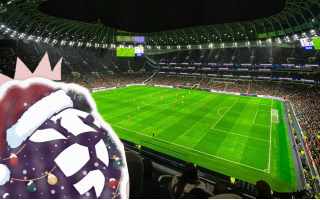
England: Premier League at the turn of the year. 7 must-see fixtures
December in the Premier League is when everything accelerates: packed stadiums, festive energy and matches that can reshape the title race. This article highlights the key fixtures you should consider attending — and shows how to secure tickets before availability disappears.
-
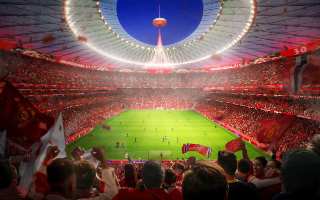
Great Britain: 2035 Women’s World Cup stadiums. New Trafford confirmed
Great Britain could host the 2035 FIFA Women’s World Cup, and today the list of stadiums that could welcome the world’s best players was revealed. England, Scotland, Wales and Northern Ireland have submitted a joint bid – the only one FIFA has received – which puts the project firmly in pole position.
-
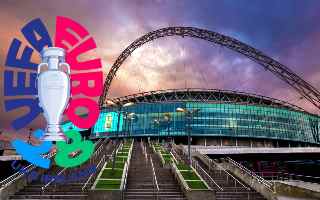
Euro 2028: Opening match in Cardiff, final at iconic Wembley – Euro 2028 venues revealed!
Although Euro 2028 is still a few years away, excitement surrounding the upcoming tournament is already building. During a ceremonial presentation at London’s Piccadilly Circus, UEFA revealed the details of the schedule and the stadiums that will host the European Championship, co-organized by England, Wales, Scotland, and the Republic of Ireland.
-
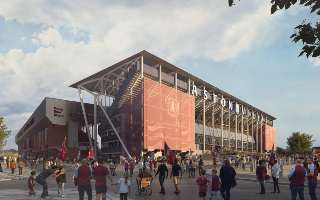
England: Aston Villa announces expansion plans for the legendary North Stand
Aston Villa has unveiled plans to increase Villa Park’s capacity to over 50,000 seats. The North Stand will be expanded to accommodate more than 12,000 fans, though the club has decided against constructing an entirely new stand.
-
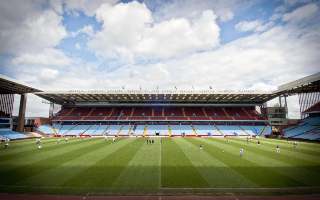
England: Aston Villa announces new fan zones
Aston Villa has revealed groundbreaking plans to revitalize the area surrounding Villa Park, including the creation of a new fan zone and a 3,500-seat venue designed for hosting various events.
2024
-

England: Will government introduce new rules on stadium sales?
The government is preparing to grant powers to an independent regulator that will prevent Premier League clubs from selling their stadiums to affiliated companies or third parties.
-
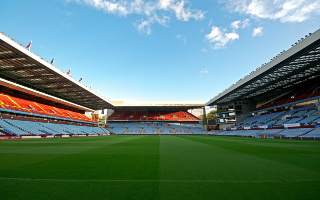
England: Villa Park takes small steps towards EURO 2028
Aston Villa has confirmed to the Fans' Advisory Board that Villa Park’s capacity could increase by over 800 seats by next summer. The ultimate goal is to raise the total capacity to over 50,000 seats, with the intent of hosting Euro 2028 matches.
-
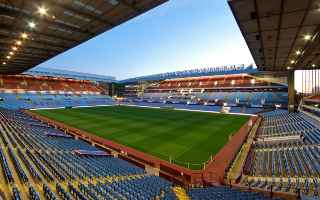
England: Former chief executive reveals obstacle in Villa Park plans
Aston Villa faces a significant hurdle in its plans to expand its venue. The club received permission for a complete redevelopment of the North Stand in 2022, but last year abandoned the idea.
-

England: Stadium Events & Hospitality Awards presented. Who took top prize?
Brighton & Hove Albion secured the top prize during a successful evening at the prestigious Stadium Events & Hospitality Awards gala. The club outperformed 28 other venues from the Premier League and Championship to win the award in the "Best Overall Matchday Hospitality Experience" category for the Tunnel Club, which opened in August last year.
-

England: Attendance at Premier League stadiums in the 2023/24 season
Another season, another league title for Manchester City. The award for highest attendance also went to the city of Manchester as well, but to the Red Devils, despite the team's worst season in Premier League history. As many as six clubs surpassed one million spectators this season, with five stadiums filling up at an average of more than 99%. Amazing.
-
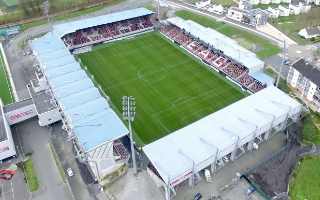
Europe: Unexpected stadiums in 2024/25 Champions League
After the last games, we now know most of the teams that will play in the debut of the new Champions League format. There are already a few surprises among these teams, including the stadiums where loyal fans will finally hear: ‘The Champions’!
-

England: Well-known portal has chosen 100 best stadiums. There are surprises
FourFourTwo, a sports-dedicated portal, has selected the 100 best stadiums in Great Britain. As the author of the list ironically stated, "We’re convinced there’ll be absolutely no arguing about it…”. So, let's take a look at which stadiums made it into the ranking.
2023
-

England: Aston Villa hold up stadium expansion for bizarre reason
Back in July, The Villans announced the expansion of the stadium in Birmingham to prepare it for Euro 2028. The permission was granted in October, but in December they halted work at Villa Park before it could begin. They cited... over-performance as the reason.
-

UEFA: Official announcement of EURO 2028 and EURO 2032 hosts
UEFA has officially announced that the UK and Ireland will host the European Football Championships in 2028, while Italy and Turkey will co-host the event in 2032.
-

England: Latest Villa Park expansion plans revealed
Premier League side Aston Villa have unveiled updated plans for the redevelopment of the north stand of their home ground. A revised planning application has been submitted to Birmingham City Council incorporating a number of design changes to the new structure.
-

EURO 2028: Great Britain and Ireland announce list of stadiums
The most important football tournaments are fast approaching, and with them comes discussion about the future hosts of both the World Cup and the European Championships. The front runners in the race to host EURO 2028 are Great Britain and Ireland.
2022
-

England: Aston Villa among the stadium elite?
Villa Park is not one of the new stadiums - it dates back to the 19th century. During its many decades of existence, the venue was used not only by the Birmingham club, but also on occasions of the World Cup and UEFA Euro. It is very possible that the not-too-distant future will bring back the glory years of The Villans' stadium.
-

England: Stadium rises will affect Premier League clubs
The value of almost all 20 stadiums owned by teams playing in the Premier League has recently increased. As a result, clubs will face multi-million pound tax increases involving their infrastructure.
-

United Kingdom: Is football coming home at the Euros?
At a time when most of the chatter is about the World Cup, plans for the next major football events are being clarified. Great Britain and Ireland announced their joint candidacy for hosting Euro 2028 some time ago. A shortlist of stadiums being considered by the federations was also recently announced.
-

England: Renderings of the revamped Villa Park revealed!
Aston Villa have just unveiled graphics showing what their home ground will look like after redevelopment. The club is already after consultation with local residents about the planned upgrade and hopes to start the first phase of the project by next year.

 StadiumDB
StadiumDB